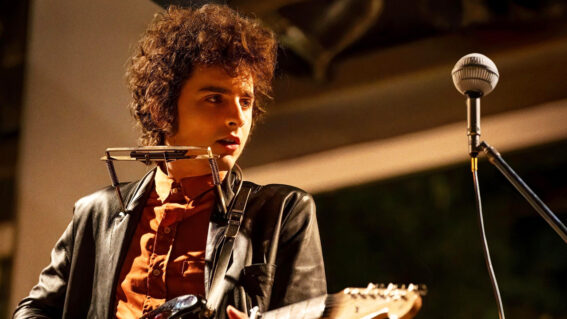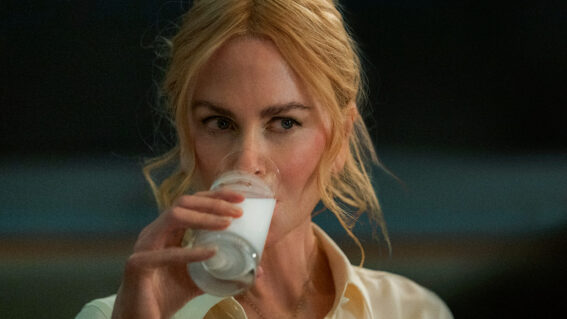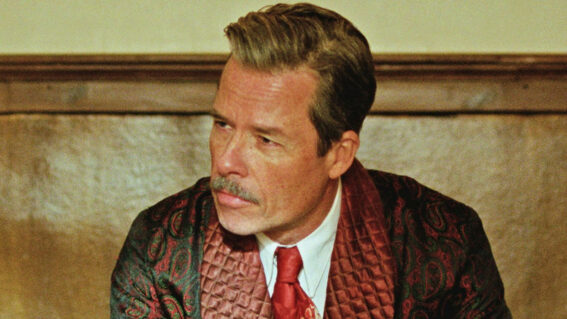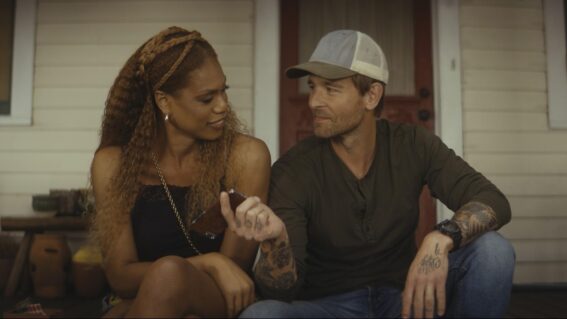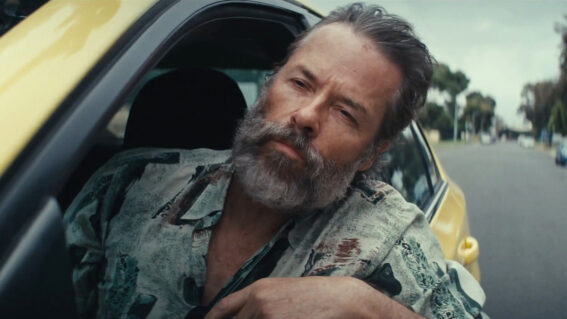15 years on, Children of Men is still a knuckle-gobbling dystopian masterpiece
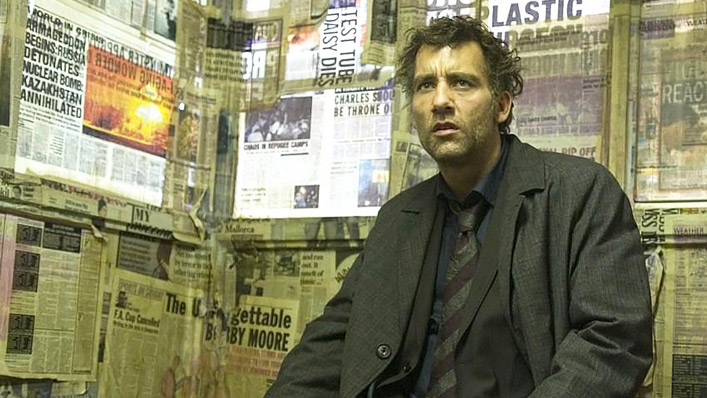
Critic Luke Buckmaster revisits Alfonso Cuarón’s 2006 masterpiece Children of Men in the weird haze of 2021 and asks: what do we see in it now that we didn’t before?
There’s nothing like a great dystopian drama: they shock and enthrall with grimly imaginative possibilities, asking us to reassess the trajectory of human society through the dirty prism of a world gone wrong. What can we do to avoid a future like this? And are we already completely rooted? These are the core questions in a genre that famously involves happy-go-lucky subjects such as human corpses turned into food and self-aware androids trying to extend their life span.
See also:
* Movies now playing in cinemas
* All new streaming movies & series
Rewatching Alfonso Cuarón’s 2006 masterpiece Children of Men in 2021, I asked myself another question. What do I now make of this great film—one of the best and most enthralling of the genre—that I didn’t see when it first arrived a decade and a half ago? Often conversations around the accuracy of films set in the future involve reasonably superficial things, for instance home entertainment systems, flying vehicles and delicious dehydrated pizza. Cuarón’s film (loosely adapted from P.D. James’ novel) beckons to be interpreted on deeper levels.
The core themes are only becoming more relevant
Based in a world where humans have become infertile—thus there are no babies and no children—one could consider it in Gileadean terms: linking it to a possible infertility crisis developing in our own world. One could re-engage with its commentary on refugees, being based in London, circa 2027, where ‘fugees’ (people who made it to England after fleeing war-torn regions) are locked up like animals. On that subject the Trump presidency—and Australia’s ongoing treatment of asylum seekers—provide more than a few contemporary talking points.
In Children of Men there’s also the pernicious oppressiveness of an increasingly authoritarian state, laced with visions of random citizens having bags put on their heads and being whisked off to the gulag. That sort of thing is on the mind given recent events in Australia, where the government can get away with conducting all but secret trials as well as dispatching a counter-terrorism police unit, set up to pursue lone wolf terrorists, to nab a YouTube comedian’s producer from his home.
These themes make Children of Men a work that will never lose its relevance. Yet the strange thing about my return to the film this year, with that pesky pandemic thing still raging in the background, and very strange vibes in this moment in cultural history, was how compelled I felt to see the optimism in it. The idea of hope still existing in a world that has truly gone to the dogs.
They paved paradise and put up a dystopian hellhole
Cuarón frames his view of liberty, fairness and humanity through the Big Yellow Taxi perspective: you don’t know what you’ve got till it’s gone. Yet hope for a new world has manifested in the form of what has become unthinkable: the existence of a pregnant woman, Kee (Clare-Hope Ashitey), who is also a fugee. In one great biblical-esque moment we observe the amazing effect the presence of a baby has on people at war: they momentarily halt their violence and pause, frozen in wonder, mouths agog, allowing the bub and her mother safe passage before recommencing violence.
Former activist Theo (Clive Owen) is the bothered British protagonist—ruffled, rumpled, more or less resigned to the ways of the world—who becomes an unlikely hero. Perfectly played with weary charm by Owen, Theo reminded me of an argument put forward by Howard Suber in his excellent book The Power of Film. Noting that critics like to use the term “antihero” to describe characters such as him, Suber countered that by claiming antiheroes don’t exist—arguing there “are only characters who act heroically and those who do not.” Reluctant heroes are not antiheroes, the film scholar says, but simply “people who are not yet heroes.”
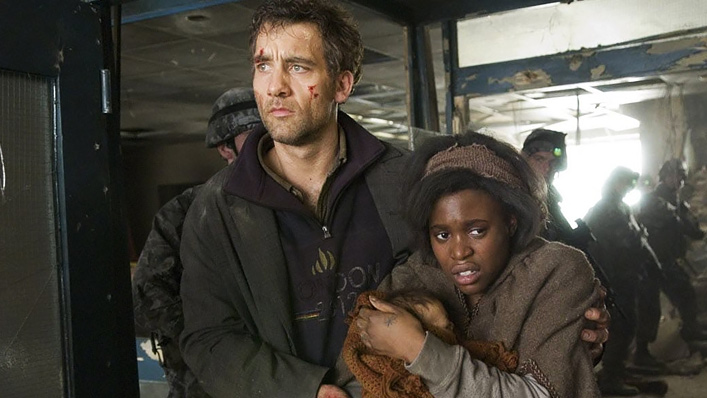
Theo’s journey, from saving his hide to saving the world
Theo begins very much in the ‘not yet’ camp—an ordinary bloke downing pints, getting through the day and trying to keep his head down. His discovery, around 45 minutes in, that a group assumed to be the good guys are plotting to kill him and take Kee’s baby marks the beginning of his transformation to hero—to save his own hide initially, but soon out of a sense of moral obligation. In a white knuckle getaway sequence, Theo, Kee and her midwife Miriam (Pam Ferris) escape in a banged-up car with a flaky engine. You really, really want that engine to start—and it’s far from the only knuckle-gobbling sequence.
Emmanuel Lubezki’s camera work is graded in a dusty grime-baked palette, brilliantly combining daringness and virrismillute. That old cliché about the camera being a character takes on thrillingly human qualities. It ducks, weaves, crouches, runs as it accompanies Theo down carnage-strewn streets and buildings. In one scene, following the protagonist down a hallway, the camera looks to the right and observes a pocket of action (four people huddling on the ground) then rests back on the protag, as if emulating the turn of a head. The camera has a life of its own; a virtual self.
Here’s one sublimely well directed sequence
Other sequences feature tense interplay between foreground and background elements. In one of the quieter moments, for instance, Theo and Miriam converse in a classroom in a dilapidated former primary school, with Kee outside viewable through broken glass, rocking back and forth on a child’s swing. Because the scene is so well directed and acted, you barely notice that Miriam’s dialogue, reflecting on when all the miscarriages started happening, has a novelic kind of heaviness. “As the sound of the playgrounds faded, the despair set in,” she says. “Very odd, what happens in a world without children’s voices.”
By the end of this significant monologue, Miriam has repositioned herself next to Theo towards the right of the frame, with Kee outside on the left. The actors’ sight lines direct us to her, shifting our gaze. This is a technique from theatre known as blocking, involving the movement of actors and their spatial relationships with each other.
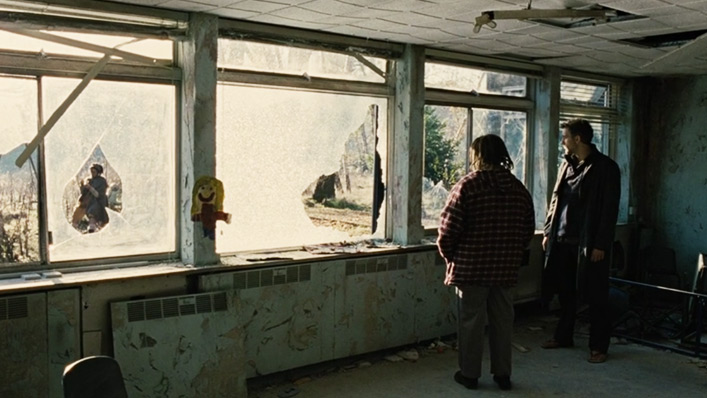
I could go on and on about many other moments in this superb film. I haven’t even mentioned Michael Caine’s supporting performance as Theo’s father-like friend Jasper, who memorably implores him to “pull my finger, pull my finger!”, audaciously inserting a fart joke into one of the key emotional scenes. This made me think: there aren’t enough whoopee cushion jokes at funerals. During another moment, in a boat, I recalled a vision of Truman Burbank travelling to the end of the horizon.
But it’s those big, bold, grim themes that burrow into the psyche and linger. Like the best dystopian films, Children of Men pins us to our seats as it pushes us to the brink of existence. And yet, in the darkest of dark times, hope springs eternal, in the words of that cheesy old proverb. Perhaps I’ll watch the film again, in a decade’s time, and see something different. In fact I’m counting on it.




